
Dropshipping with TikTok: What You Need To Know Going Into 2024
Brands big and small are experiencing massive success with the sixth most popular social media platform in the world, TikTok. The video-sharing app has exploded in popularity since its introduction in 2017, quickly becoming not only one of the most used social media apps but one of the most influential, especially when it comes to consumer spending. With TikTok's Shop tab launching in the US in 2023 and Shopify integrations becoming commonplace, it’s clear the platform is establishing itself as a top social commerce platform, rivalling the likes of internet giants such as Facebook and Instagram. If your brand is not on TikTok in 2024, you’re missing out on one of the most effective marketing tools of our time. At Dropshipzone, we understand the importance of trends, which is why we’ve curated the top expert tips and tricks to help your brand thrive on TikTok, capitalise on trending content, and choose winning products for your online store.
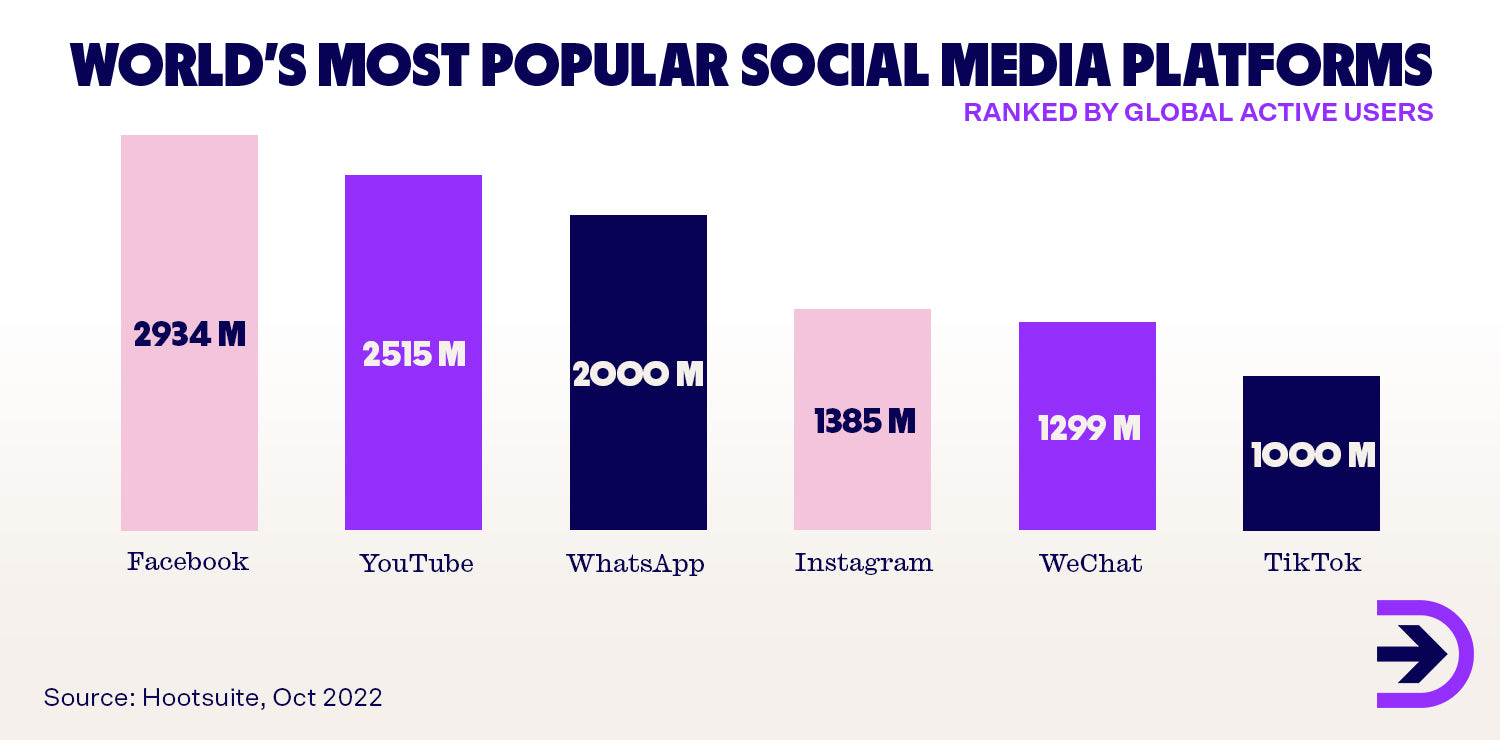
Understanding TikTok for Dropshipping
TikTok's ecosystem is driven by trends, creativity, and community engagement, making it a fertile ground for dropshippers. The platform's algorithm, unlike others, prioritises relevance over past interactions or established authority. Because of this, the For You Page (or FYP, a user’s main content feed) is made up of both new and familiar content. This allows even smaller creators to have a significant impact, as they are just as likely to show on a user’s feed as established creators, hence the flourishing growth of micro-influencers.
This blend of content also enhances the accuracy of the algorithm as you continue to scroll, resulting in the creation of highly niche communities dedicated to specific topics, hobbies or other interests. Ironically, these niche communities attract a wide audience, giving TikTok an extensive reach. With over 1.5 billion active users globally, anyone can go viral - including brands with a highly relevant, attractive product.
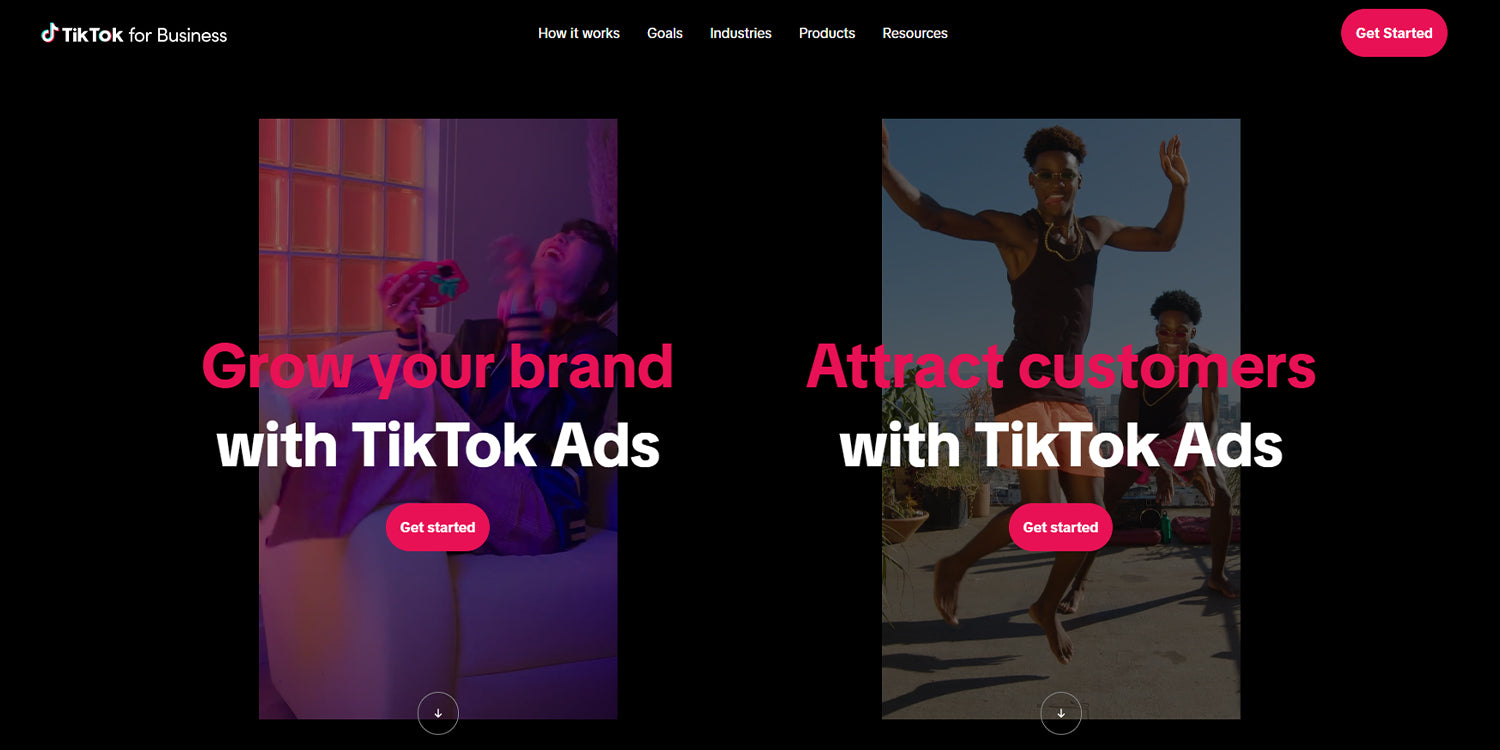
Before advertising your dropshipping store on TikTok, you should create a free TikTok business account. This account gives you access to tools such as the TikTok Business Centre, TikTok Ads Manager, TikTok Insights, and the Business Creative Hub. These hubs give dropshipping retailers the tools they need to create ad campaigns, work directly with influencers, and create assets such as branded effects. A TikTok business account also grants you access to the Commercial Music Library, with more than 1.3 million royalty and copyright-free sounds available for commercial use. Everything you could possibly need to advertise your dropshipping store and products, all in one place.
Unfortunately, you cannot directly dropship products from TikTok in Australia. There are a couple of reasons for this. Firstly, TikTok’s ecommerce solution, TikTok Shop has yet to see global release, locking Australians out of many of the platform’s online selling features. Secondly, TikTok Shop has certain restrictions around international dropshipping, which is considered a form of seller fraud on the platform. The TikTok Shop Seller Performance Evaluation Policy states:
“International Dropshipping is a practice where orders are shipped directly to customers from international suppliers or warehouses other than the US-based warehouses that hold the inventory.”
Although you cannot directly dropship from TikTok in Australia, it is not against policy to advertise your dropshipping business through TikTok’s advertising platform, as long as you follow the rest of their Advertising Policies.
Advertising Options on TikTok for Dropshippers
Dropshipping with TikTok Ads Manager may seem daunting, but the platform is an exceedingly versatile tool that allows you to run successful marketing campaigns easily and efficiently.
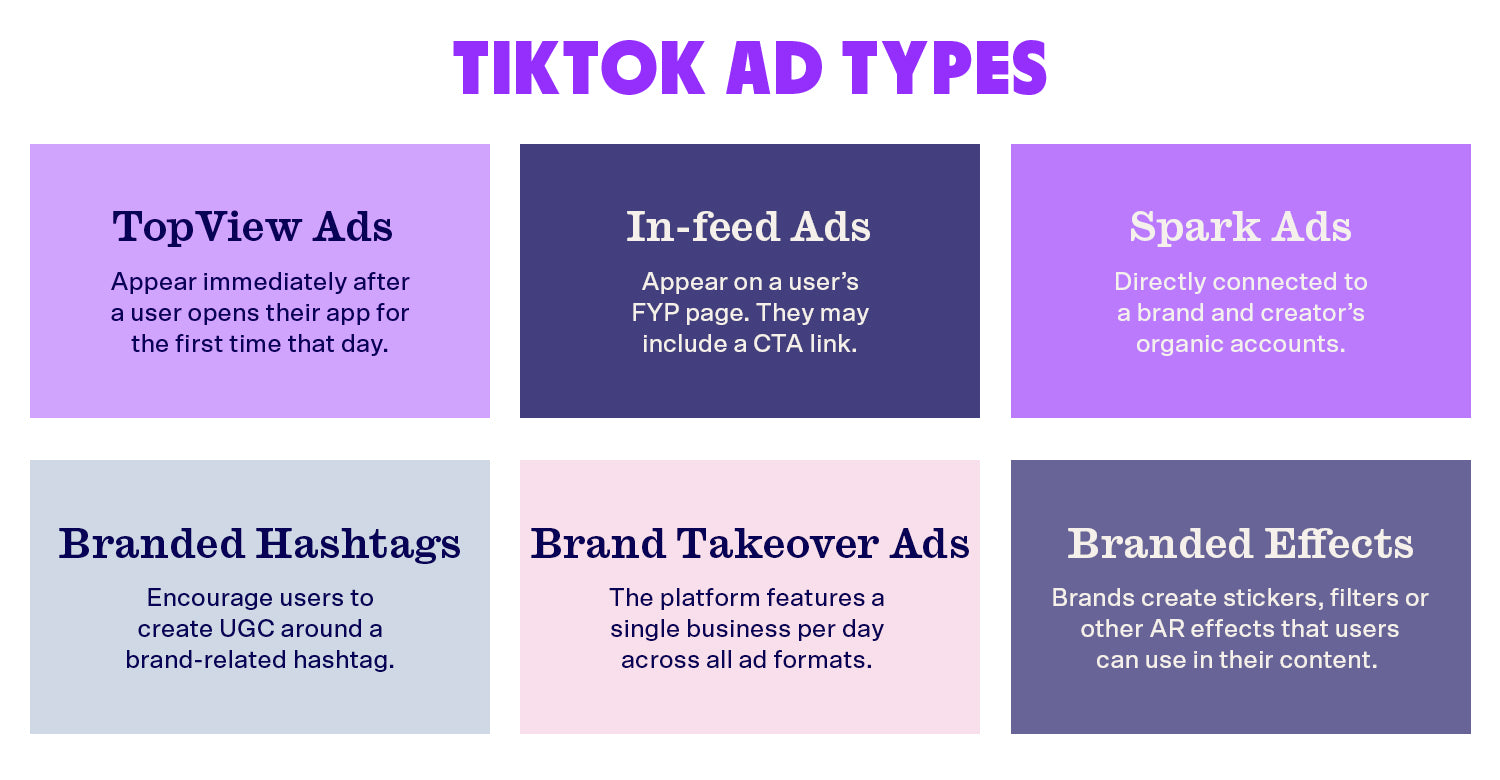
TikTok Ads
TikTok has three tiers of ad units: Campaigns, Ad Groups and Ads.
To create TikTok ads, you first need to create a campaign. Here, you can set your campaign objectives, a campaign budget, and your targeted Ad Groups.
Ad Groups are collections of ads that will be shown to a targeted audience. You can choose this target audience based on specific demographics, or you can choose a Lookalike Audience. A Lookalike Audience uses algorithms to study attributes of a custom audience that you create, and then find users who are similar to that group. You can also choose a custom budget (daily or lifetime spend) with one of four bidding methods, and you can place ads manually or automatically.
Finally, there are six types of paid advertising available to businesses on TikTok.
TopView Ads
These ads appear immediately when a user opens the app. They allow users to like, comment, share and follow the ad account or poster. Since it’s at the top of the FYP, this ad eliminates competition and guarantees more impressions.
In-feed Ads
These ads appear on a user’s FYP and autoplay as they scroll. Like TopView ads, these are interactive and can include links to landing pages or app stores. These ads blend in with other TikToks on the platform, making them feel like native content. However, this means they are easy to dismiss and must compete with every other video on the platform.
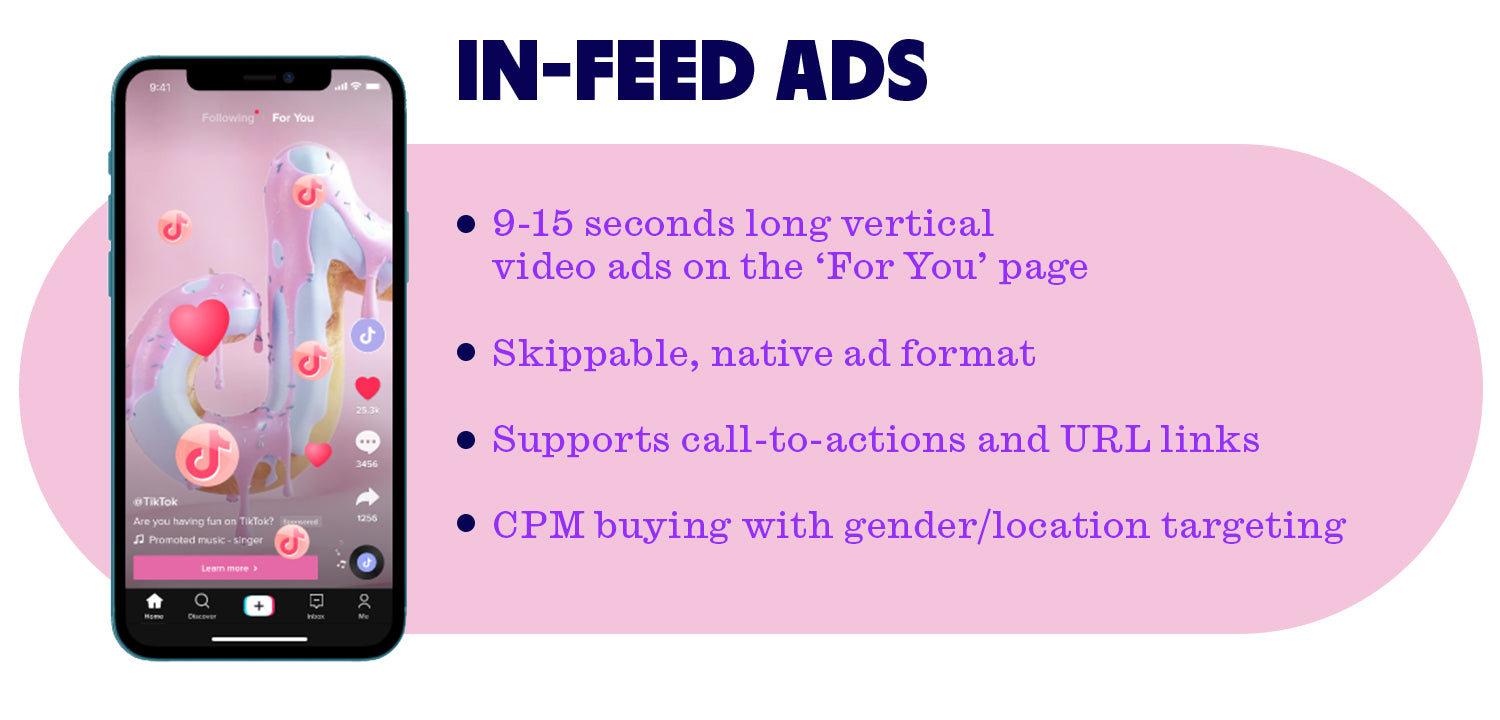
Spark Ads
Spark Ads sit on the fence between organic content and regular TikTok ads. This native ad format allows users to post ads from their own accounts as well as posts from other creators (with their permission). These ads are connected to both brand accounts and the original creator’s account, making it a win-win for both influencers and brands. They can be used to increase both followers and brand presence on the platform.
Branded Hashtags/Challenges
This ad type encourages users to create UGC around a brand-related hashtag and/or hashtag challenge. Brands using this format have exclusive access to the hashtag. These hashtags have high virality potential due to their popularity and the use of UGC makes the campaign feel organic and genuine, but user interest is key to a successful campaign - if users aren’t interested in participating, it will flop.
Brand Takeovers
These are full-screen ads that, like TopView ads, are shown to users when they open the app. They are unskippable and can use dynamic or static content. While these ads can deliver on impressions, users can easily identify Brand Takeovers as an advertisement, and the platform only features a single business per day.
Branded Effects
Branded Effects are stickers, filters or other AR effects that are created by brands for creators to use in their content. These ads are popular with a wide variety of users (though they are favoured by younger demographics) and lead to high levels of engagement, especially when paired with a branded hashtag challenge.
TikTok Influencers
Even with such a wide variety of high-performing formats, the best way to advertise on TikTok is through influencer marketing. Around 72 per cent of Gen Z and Millennials follow influencers on social media, and 82 per cent of consumers say they’re likely to follow the recommendation of an influencer they follow. The market size for influencer marketing is expected to reach 22.2 billion by 2025 - more than double what it was worth in 2020. As an industry, influencer marketing continues to grow and dominate all social media platforms. TikTok specifically has become a primary choice for many brands, as the platform has high levels of engagement. The average engagement rate across all niches on TikTok is 17.5 per cent, which jumps to 20.64 per cent for nano-influencers (1,000 to 10,000 followers).
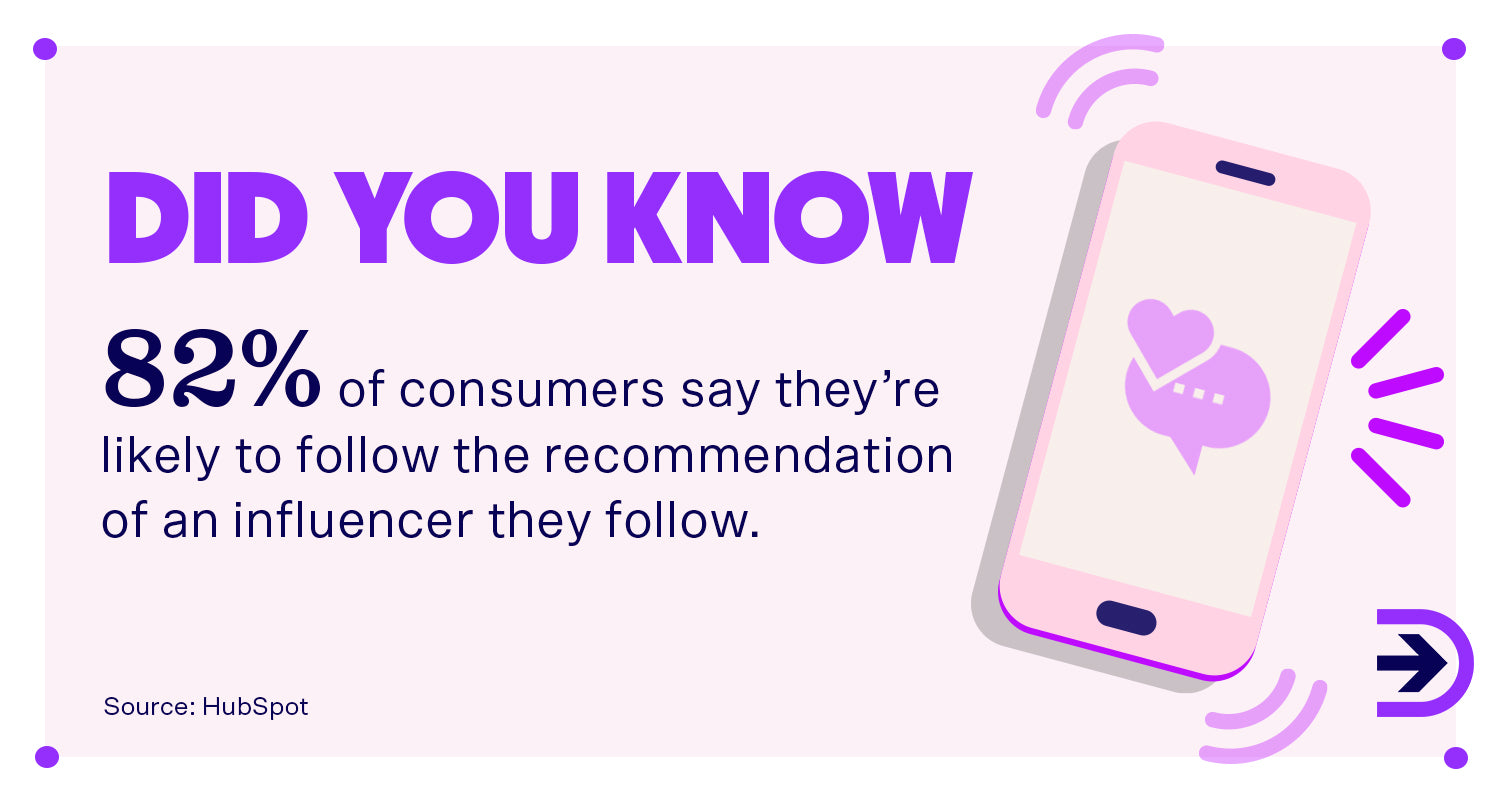
There are many reasons why TikTok outperforms other platforms when it comes to influencer marketing. For starters, short-form content is much easier to produce in terms of resources, making TikTok accessible to a wider pool of influencers and brands. Shorter videos can also spread further and faster than long-form content, pushing engagement and increasing the chance of a video going viral. Combined with the TikTok algorithm, these conditions allow nano- and micro-influencers to flourish. Because these influencers cater to smaller niche audiences, it allows them to develop more meaningful connections with their target audience rather than a larger celebrity with mainstream appeal. This, in turn, can make their content (including sponsored ads) appear more authentic and native to the platform.
Working with influencers on TikTok is easy thanks to the Creator Marketplace. The Creator Marketplace is the official platform for brand and creator collaborations on TikTok. It connects brands and agencies with qualified influencers to produce engaging content that converts. Companies can search for influencers by industry, performance or video data, and they can even view their audience over time. With the built-in Campaign Management tool, brands can also keep track of their collaborations and monitor their performance. With a world of influencers at your fingertips, there’s no limit to what you can accomplish using influencer marketing on TikTok.
Building Your TikTok Profile
Creating your business account for TikTok is simple.
-
Step 1: Download the TikTok app and sign up for a personal account.
-
Step 2: Tap Profile at the bottom right of your screen.
-
Step 3: Tap the three lines at the top-right of your screen to open the drop-down menu.
-
Step 4: Select Settings and Privacy, and then select Account.
-
Step 5: Click ‘Switch to Business Account’ and follow the prompts.
-
Step 6: Choose a category that best describes your account and industry.
-
Step 7: Add a business email and site URL to your profile.
Once you’ve created your business account, it’s time to fill out your business profile and build your brand.
Nickname and username
There is a difference between your business/profile nickname and your username on TikTok.
Usernames start with an ‘@’ symbol and are displayed under your profile picture and in your profile link. They can be used to search for and tag your account. No two users can have the same username, and you can change your username every 30 days. Your username is the keystone to your branding on TikTok, so you should consider it carefully. You might choose a username that:
-
Uses your full business name.
-
Uses keywords related to your business, industry or niche.
-
Plays with your business name using puns, jokes or rhymes.
-
Includes the year your business started or the business location.
Make sure your username is consistent with your other media handles. You can use social media handle checkers such as this one from BrandSnag to check whether your preferred username is available across relevant platforms.
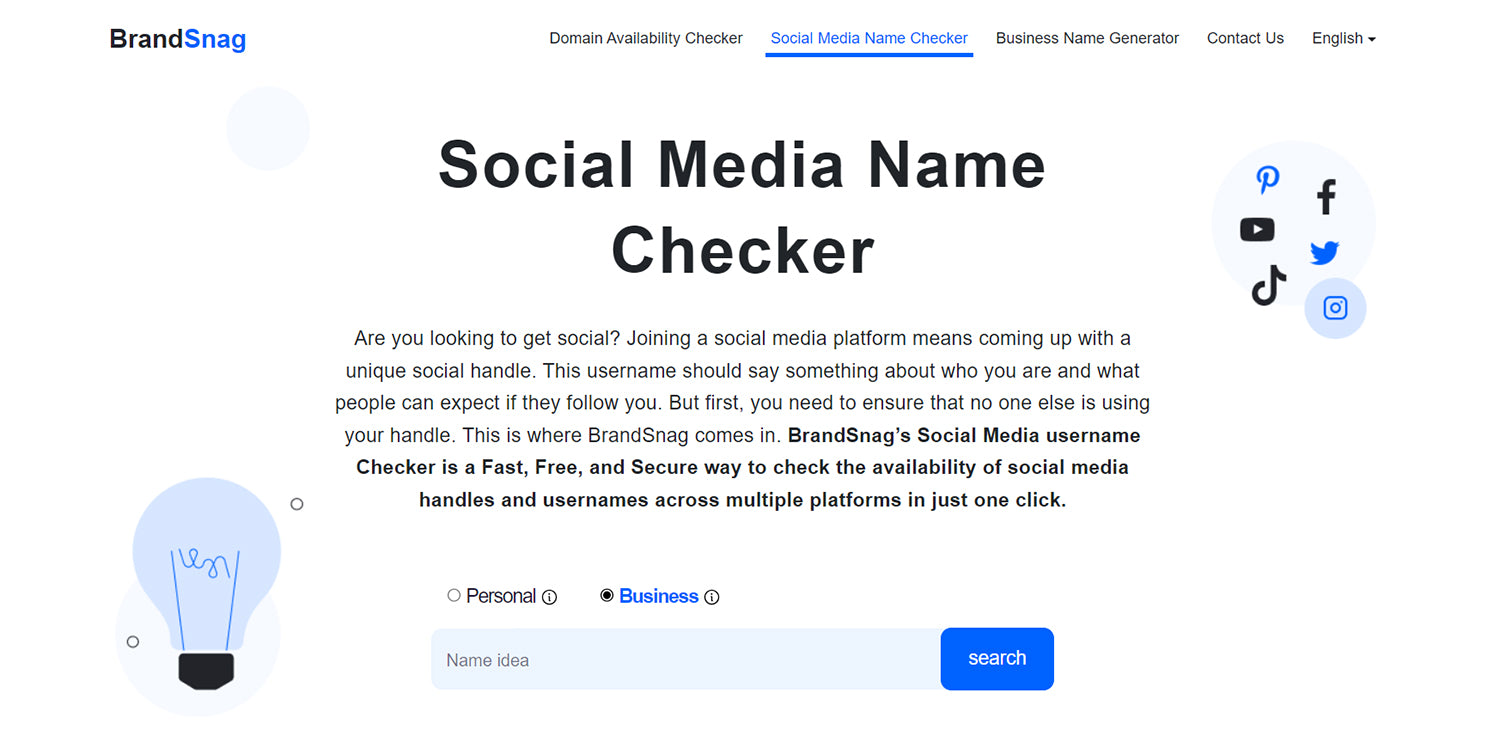
Your nickname is displayed in the For You feed, in the Friends tab, in comments and in direct messages. It will also show at the top of your profile. Users can share the same nickname, and you can change your nickname every 7 days. While your choice of nickname is more flexible, it should still relate to your business.
Profile picture
Your profile picture is the first thing people will see when they visit your profile, so naturally, your business logo is the best choice for this prestigious spot.
Account bio
Your TikTok account bio describes what your account and your business are about. You only have 80 characters (roughly 11-20 words) to describe your business, so your profile needs to be succinct. But that doesn’t mean you can’t be creative. Your bio might include a joke, a play on your business name, a conversational question or quote, your company’s goals, an appeal to authority, a show of expertise, or a creative spin on your industry. You may also want to include a call to action such as a link to your online store or other social media accounts.
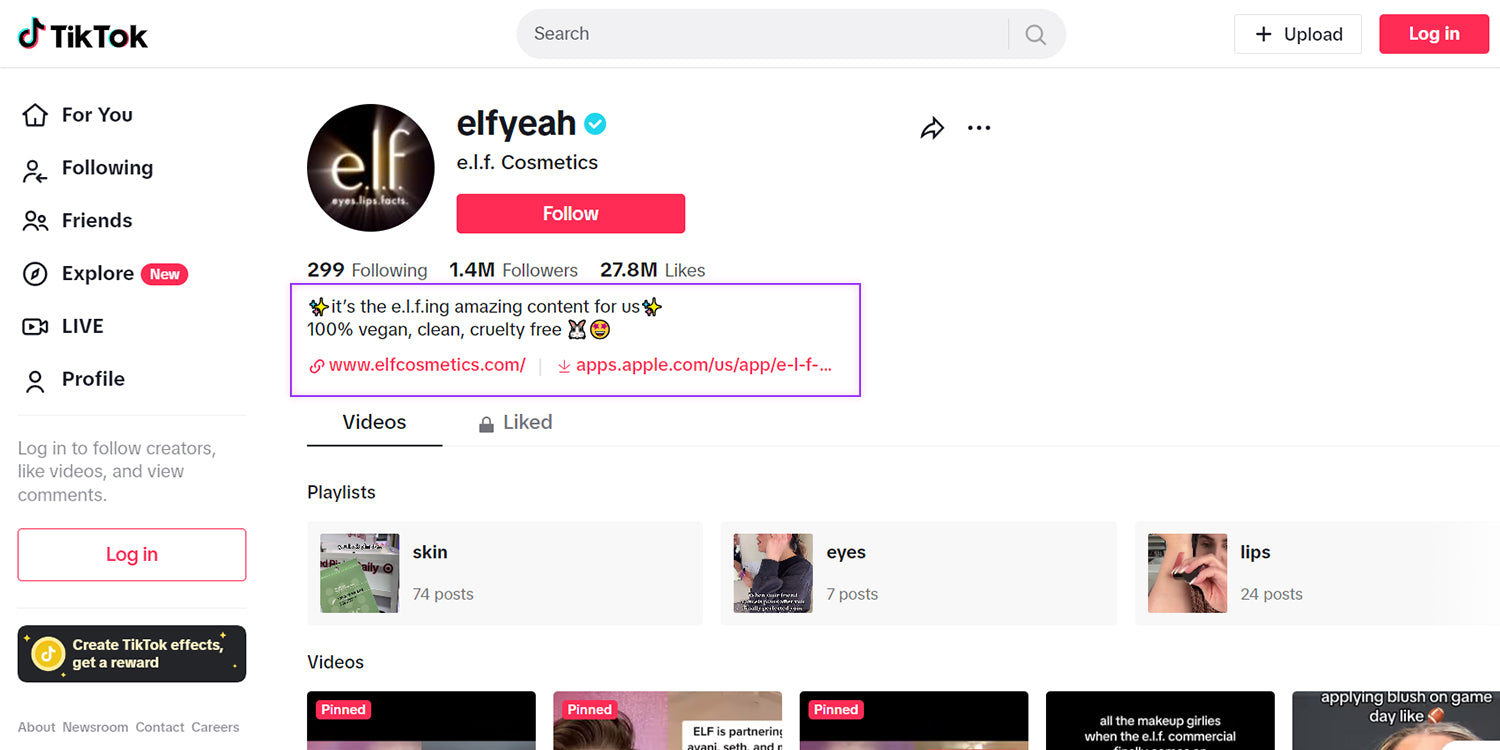
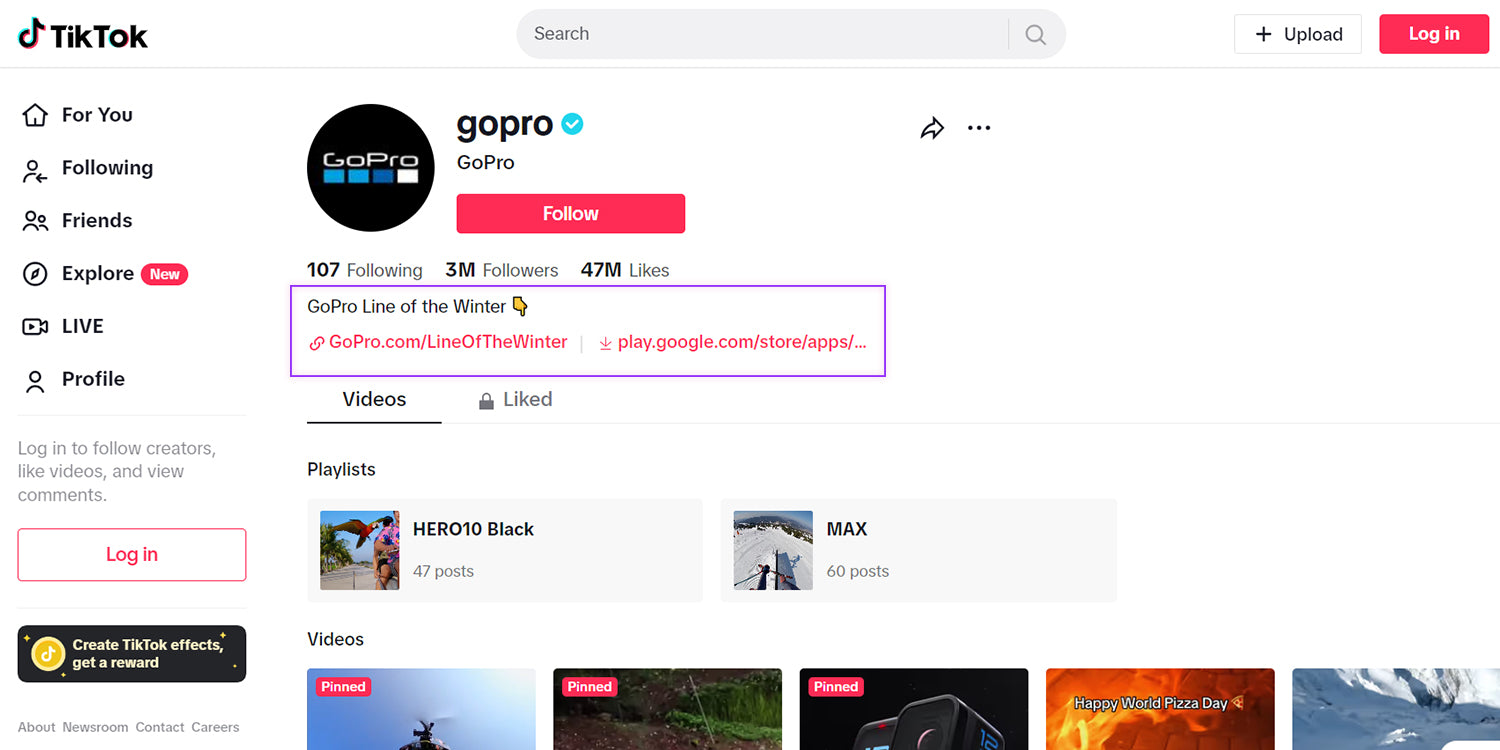
Comparing TikTok to Other Social Media Channels For Dropshipping
The biggest difference between TikTok and other platforms is TikTok’s algorithm. The focus on relevance over creator popularity offers unique advantages for dropshippers. It has had far-reaching impacts on how we consume content, connect with our community, and influence others. However, with the app still in its infancy, it lacks certain features and dedicated user bases compared to established platforms. Here are some of the main differences between TikTok and other popular social media platforms, and what that means for marketers.
TikTok vs Facebook
While Facebook boasts a broad user base, TikTok's organic reach and engagement levels, especially among younger demographics, make it a powerful competitor. We may even see TikTok win over Facebook’s older demographics in the coming years - between 2021 and 2023, the 55+ age demographic experienced 61.7 per cent growth on TikTok, meaning more potential customers.
Where Facebook shines compared to TikTok is its targeting capabilities. While both platforms have powerful targeting capabilities, Facebook collects a significant amount of data from its users which can be used for advanced targeting strategies. Facebook also shows ads in not only a variety of formats but in an assortment of positions: in Reels, in Stories, in the main user feed, and through Messenger. TikTok ads are available in a range of formats but are mainly shown in and around the main feed (both the FYP and the Following feed). Finally, Facebook’s average CPM is cheaper than TikTok, though that doesn’t always equate to cheaper marketing campaigns overall.

TikTok vs Instagram
With 2 billion active monthly users, Instagram is the world's 4th most popular social network. It has long been a go-to platform for ecommerce thanks to its wide variety of content options. Instagram allows users to post images, videos and carousels, and feeds are designed for infinite scrolling. However, TikTok's shorter-form, immersive content is capturing the attention of users. In the US, users spend 53.8 minutes on TikTok compared to Instagram’s 33.1 minutes - that’s just over 20 minutes of additional engagement.
Although many kinds of content creators use Instagram, the platform is known for delivering polished, curated content. Engagement is driven by compelling visuals and engaging captions that are carefully constructed and edited for maximum impact. In comparison, TikTok’s content is often under-produced, giving it a raw and authentic quality that attracts a wide range of audiences. While TikTok is not immune from scrutiny, the perceived authenticity of unfiltered TikTok marketing strategies contributes to high engagement levels and marketing ROI. While dropshippers experience success on both platforms, marketing campaigns should be tailored to reflect the tone of each platform.
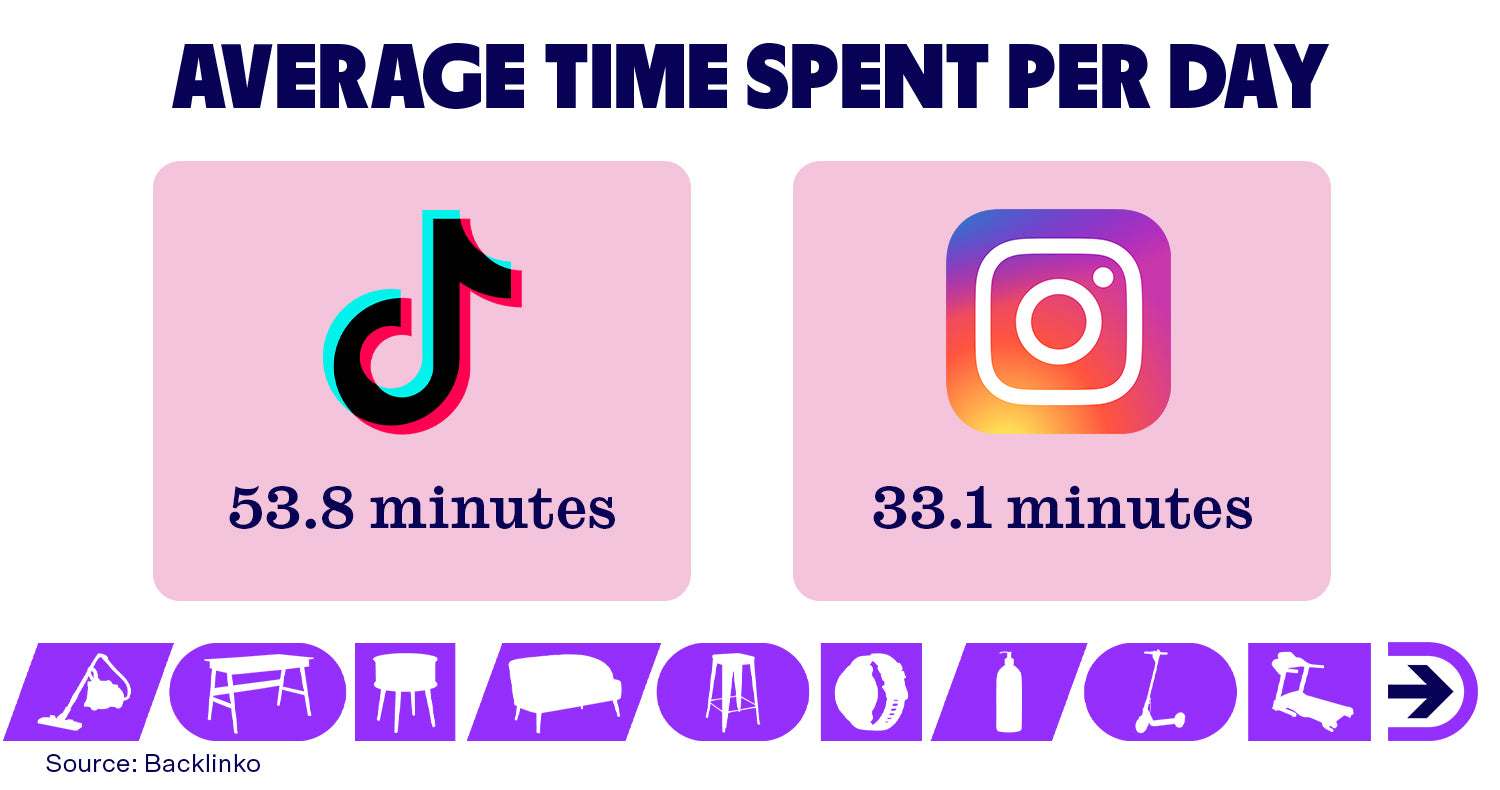
Both platforms are essential for businesses interested in influencer marketing. While TikTok is the best platform for micro-influencers, businesses looking for a relationship with experienced influencers with a huge fan base may want to look to Instagram.
TikTok vs Snapchat
Snapchat is a social media platform known for its ephemeral nature - all content disappears after a brief viewing and cannot be saved. Its longest form of content, Stories, has a 24-hour lifespan. Snapchat users can video and voice call, direct message other creators, view publicly shared stories using the Discover page, and browse content around the world using the Snap Map. However, their most popular feature may be their filters and lenses, which allow users to add graphics, special effects or interactive elements to their content.
Snapchat's short-term content shares similarities with TikTok, but TikTok's expansive user base and engagement rates give it an edge. Snapchat has approximately 406 million active daily users worldwide, most of whom are aged between 15-25. In comparison, TikTok is estimated to have approximately 900.7 million daily global users in 2024, and over 780 million daily users in China alone.

Marketers on TikTok can expect little competition, and many brands may benefit from direct outreach and the conversational nature of the app. However, TikTok's diverse content formats, everlasting video, wider age range and evolving features make it a more versatile platform for dropshippers.
TikTok vs YouTube
There’s no doubt that YouTube has dominated video-sharing on the internet since its inception in 2005. Although the competition is fiercer than ever, it is still the second most visited website in the world. With over 500 hours of content uploaded to the platform every minute, it’s no wonder YouTube has over two billion monthly active users. But the internet giant’s reign may be coming to an end. While YouTube caters to longer-form content, TikTok's short, engaging videos are reshaping how users consume content. Now, 96 per cent of consumers prefer to watch short-form video content to learn about products and services, and 47 per cent of marketers agree that short-form videos are more likely to go viral. In response, YouTube has started to embrace short-form content via its Shorts feature. These videos had the benefit of instant traffic from pre-existing audiences as well as attracting new viewers. As of February 2023, creators have also been able to monetise their Shorts. This makes YouTube a flexible platform for brands as they can post engaging short-form content as well as longer, more informative videos for products that may require more consideration before purchase.
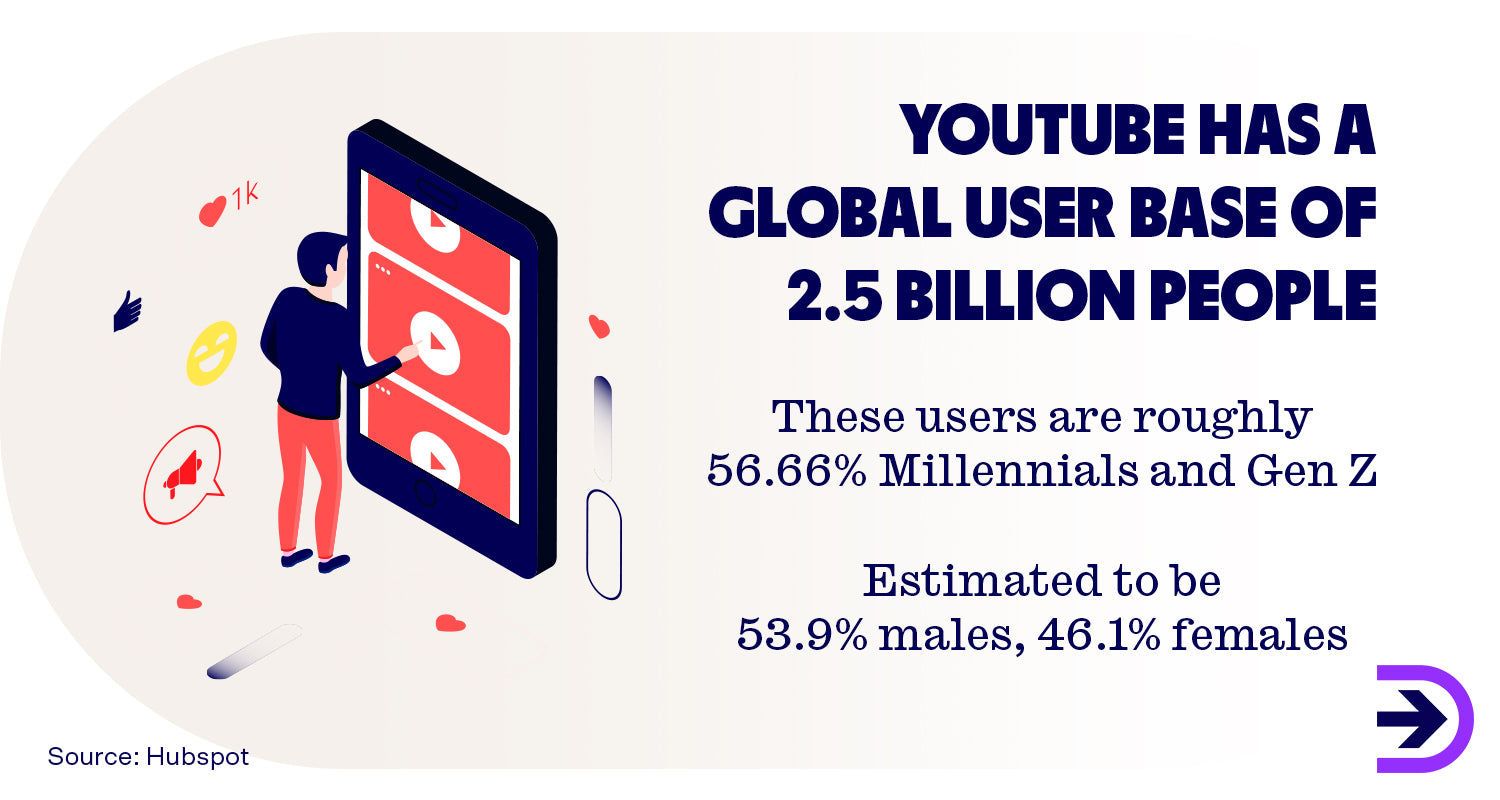
YouTube has a wide range of ad formats for your dropshipping business, including skippable and non-skippable in-stream ads, banners, bumpers and more. It also features a comprehensive analytics feature that helps users track and break down their audience with ease. You can view the full range of YouTube’s ad options for dropshippers on our blog “How to Use YouTube to Grow Your Business in 2024”. YouTube also plans to implement new tools for creators, including AI video tools, which may save the platform from obsoletion in the coming years.
Final Tips to Dropship on TikTok
Stay trendy
TikTok thrives on trends. Keep a close eye on the Discover tab, Trends tab, and trending sounds. See what your competitors are doing. Make sure you’re not only posting trending content but that you’re using trending sounds, hashtags, filters and all of TikTok’s native features. Incorporate these trends into your TikTok videos to stay relevant.
Engage with influencers
Leverage the power of influencers to amplify your reach. The Creator Marketplace is a goldmine for finding influencers aligned with your brand and building a successful campaign. Don’t forget - micro-influencers can be just as, if not more, effective than big-name influencers and celebrities.
Post consistently
Posting at least once a day can help your online business to remain relevant and attract new followers. Make your profile a compelling showcase of your products. Take advantage of TikTok Live and engage in consistent live streams with exciting giveaways. You’ll also want to post during the times your target audience is most active on TikTok. According to a study by SocialPilot, the time slots with the highest engagement in Australia are Tuesdays at 9 am and Thursdays at 12 pm.
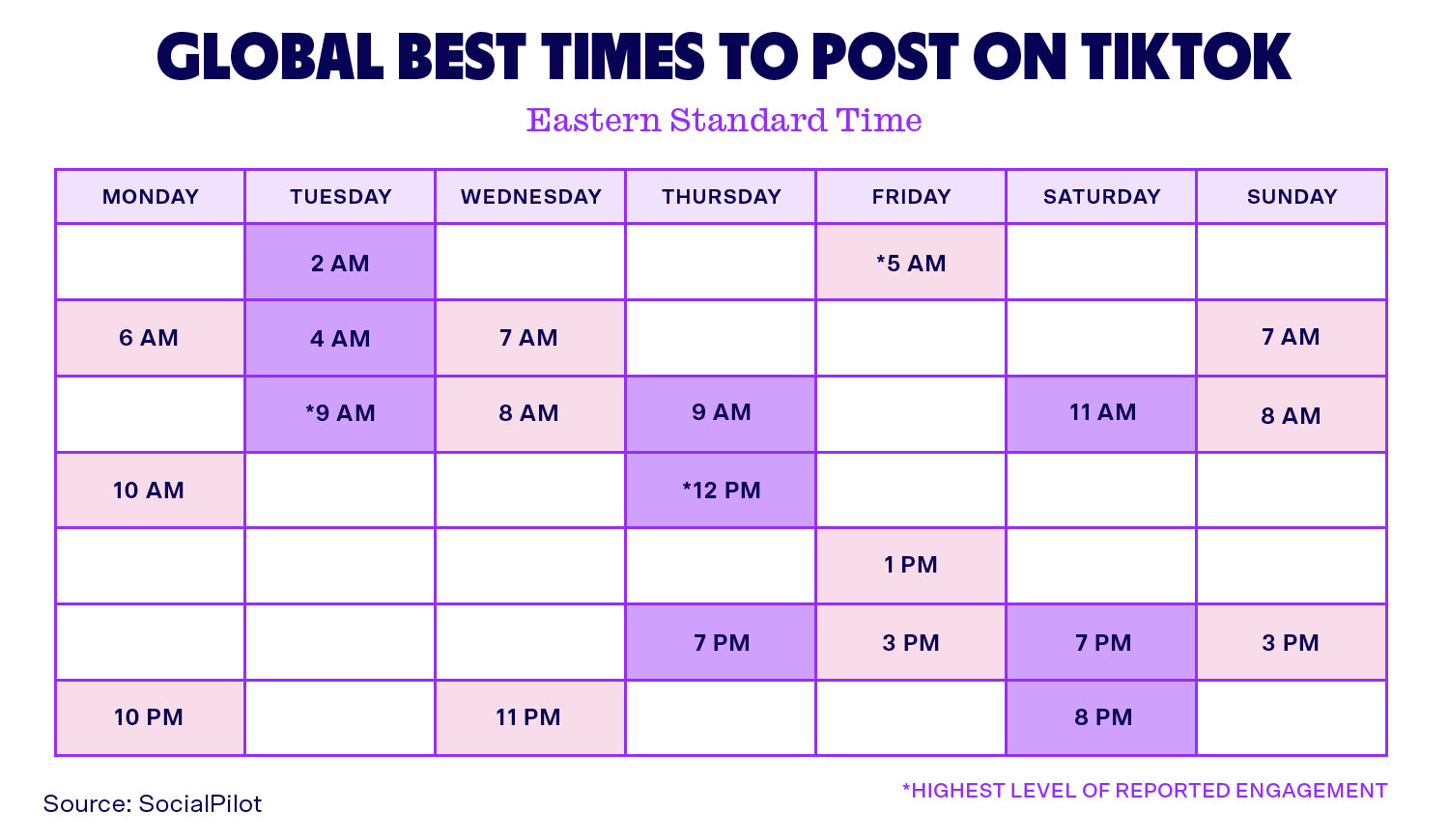
Experiment with ads
Explore various TikTok ad formats to see what resonates best with your audience. TikTok’s wide range of ads offers diverse ways to capture audience attention. Use TikTok’s analytical features to monitor your ad performance and determine the perfect TikTok advertising format for your products.
Understand the Algorithm
TikTok's algorithm is unique. Focus on relevance, use trending keywords, and engage with your audience to improve your chances of reaching the 'For You Page.' Use TikTok-specific features to make your content native to the platform. Remember: relevancy is the key to success. Don't forget to optimise your video captions and subtitles - not only do these contribute to SEO, but they also make the videos more accessible to TikTok users who are disabled or listen with their sound muted.

Find trending products at Dropshipzone
Dropshipzone has made it easy to add trending products to your dropshipping store within minutes, keeping you up-to-date with your competitors and keeping your customers happy. We feature products from a wide range of categories, and our Suppliers are carefully selected for their quality goods, competitive pricing and reliable delivery. Once you’ve added your desired products to your store, you’ll have access to clear, high-definition images and all the product information you need to craft the perfect short-form ad campaign for your ecommerce platforms of choice. Best of all, you can get started today for free - no subscription required. With Dropshipzone, you’ll have customers sharing #tiktokmademebuyit in no time. Start dropshipping with Tiktok and Dropshipzone today.


